The Pieces


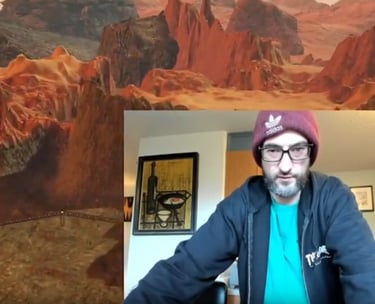

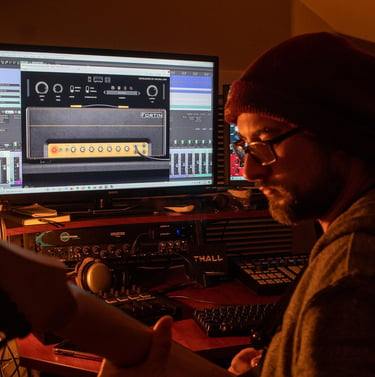



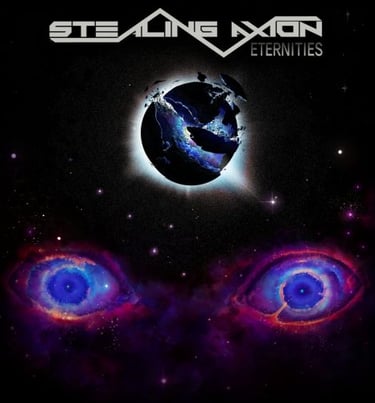

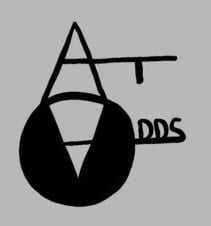

to dreamlike worlds
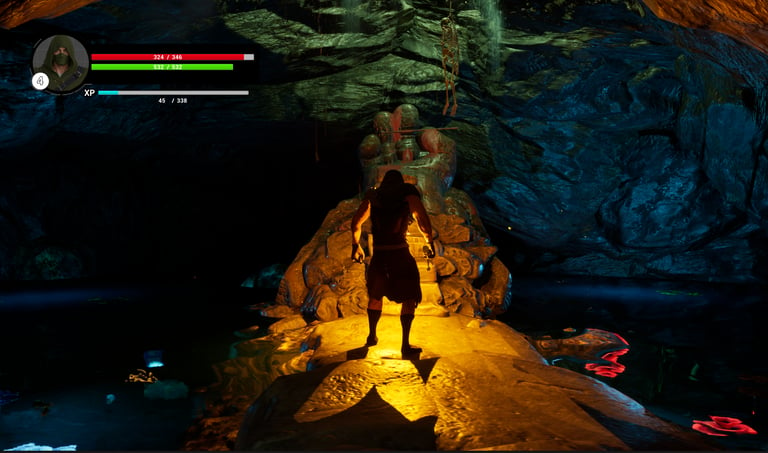

"Cults Of Sacrifice"
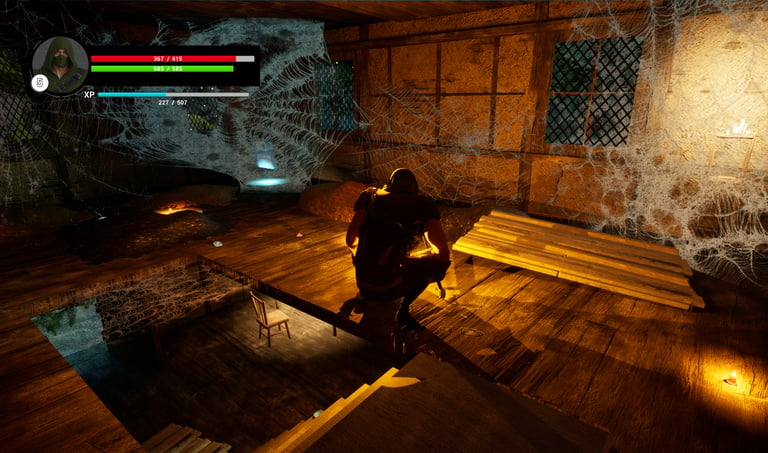

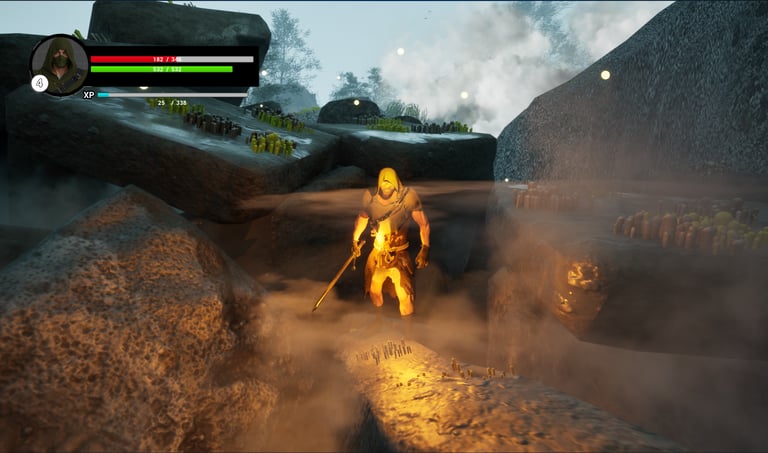

From dreamlike objects
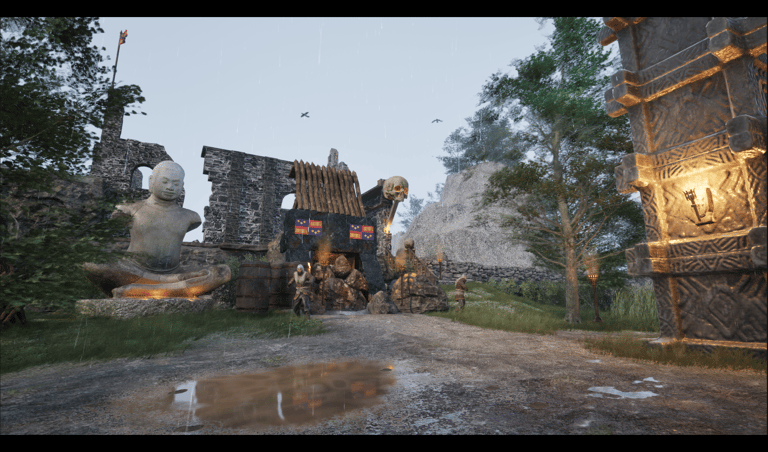
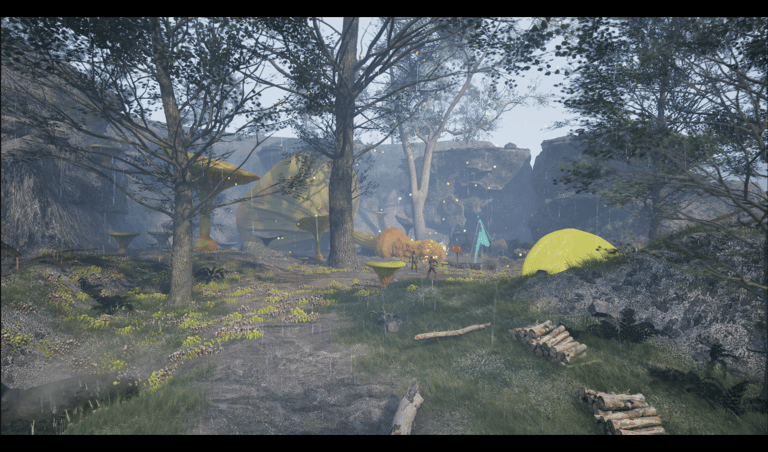
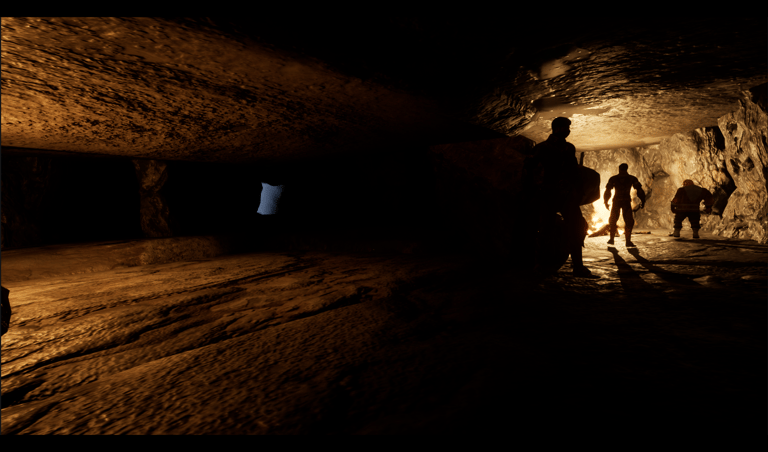

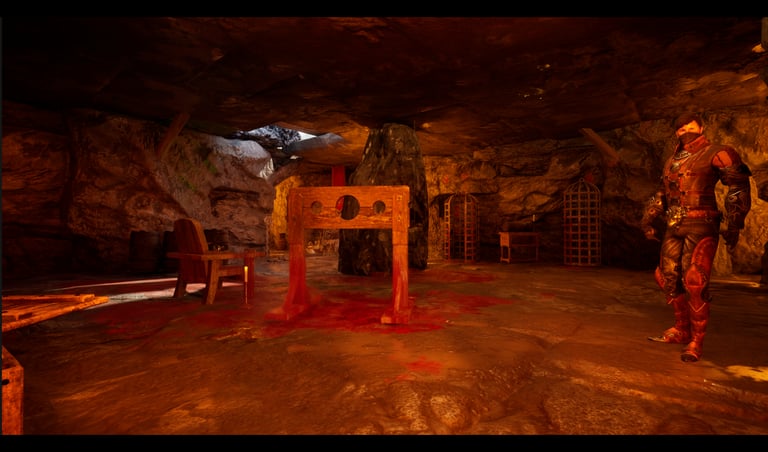
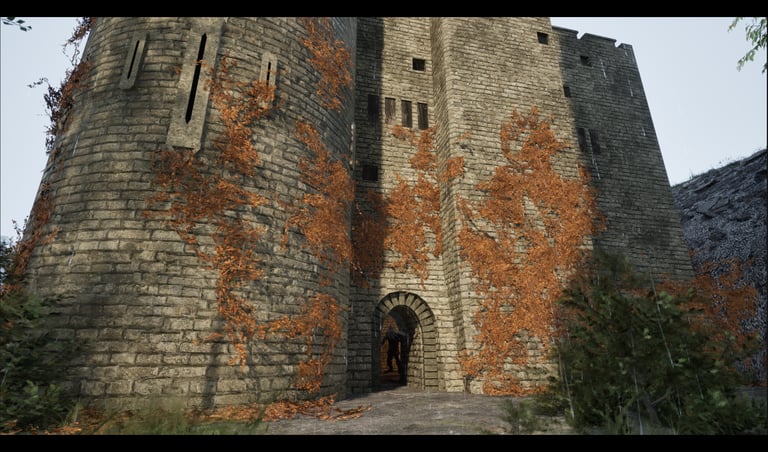
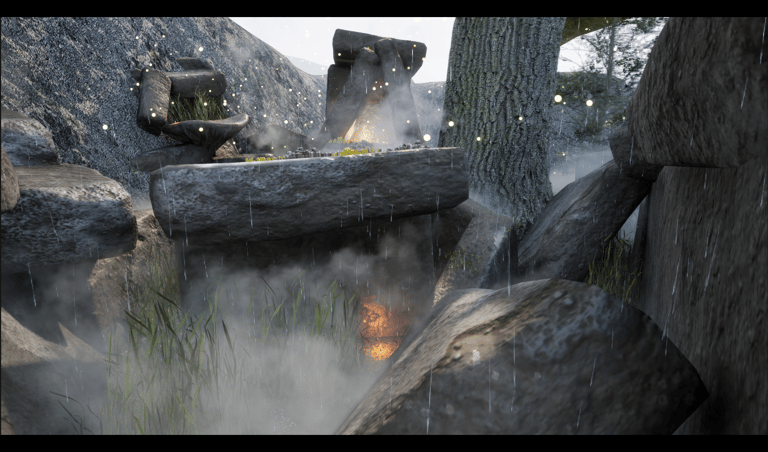
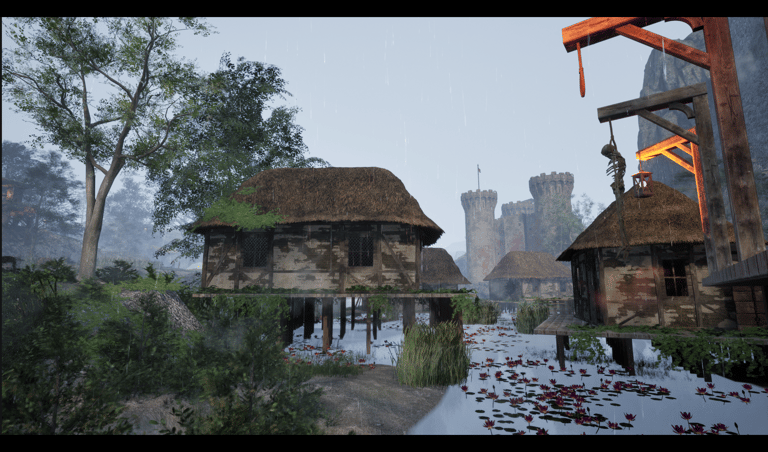
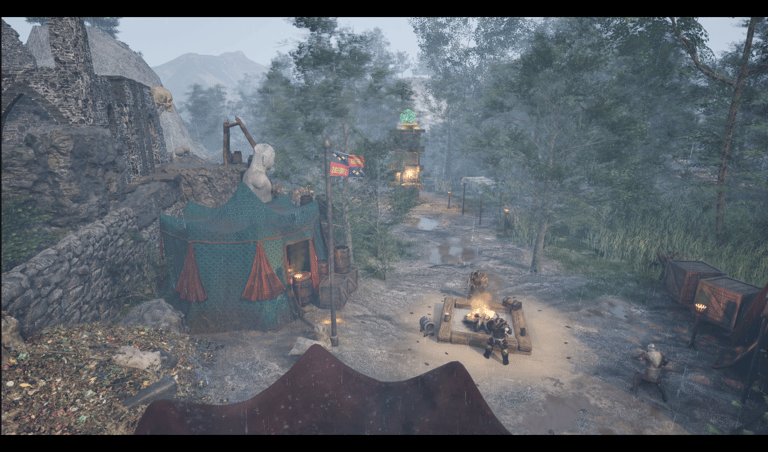









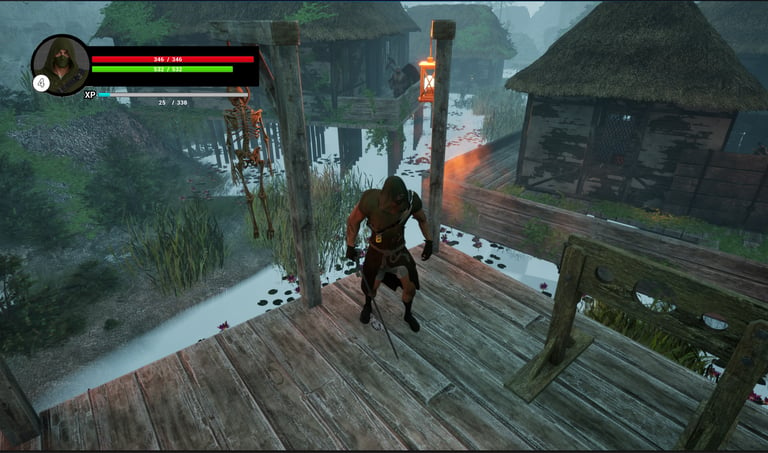

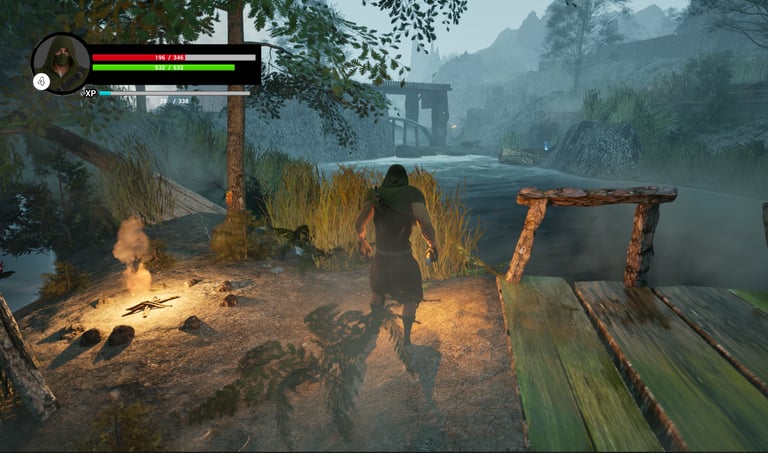

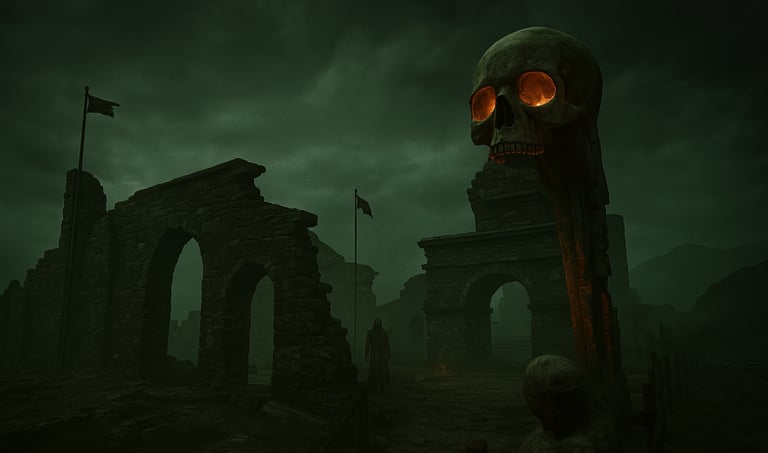

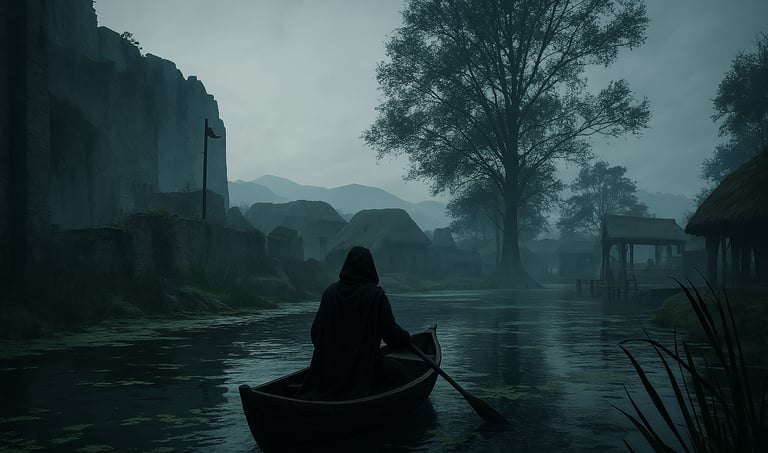

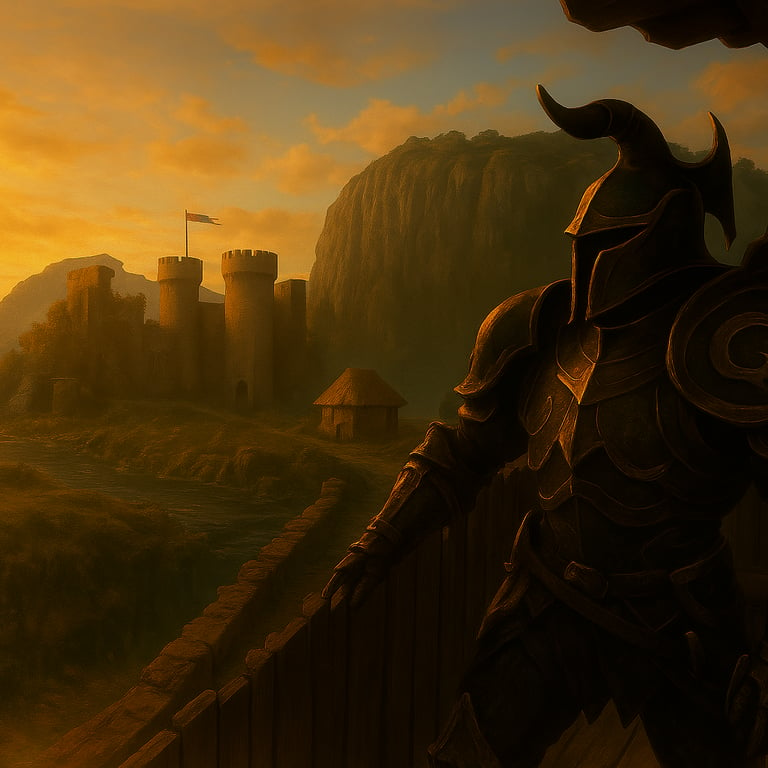
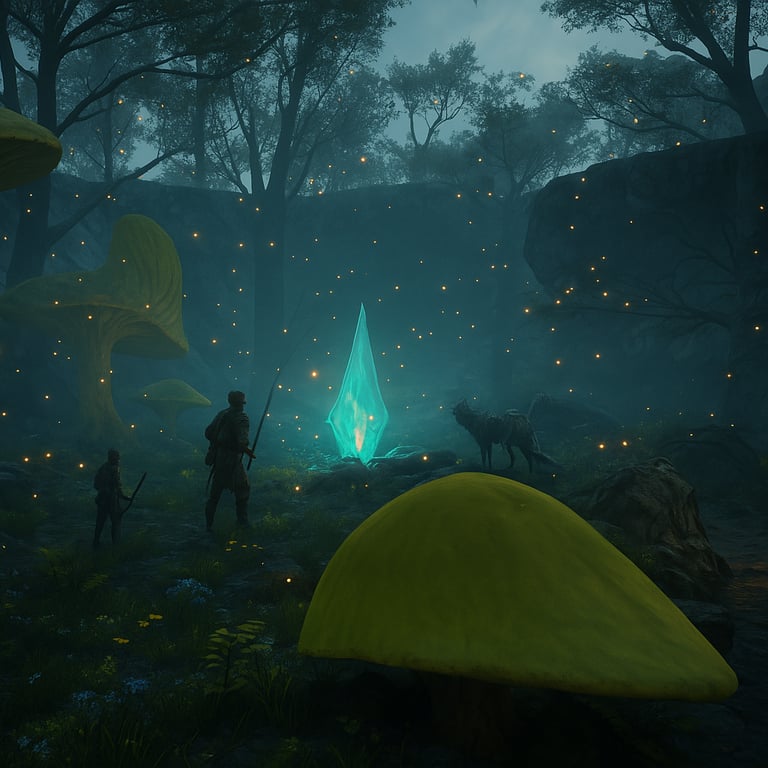
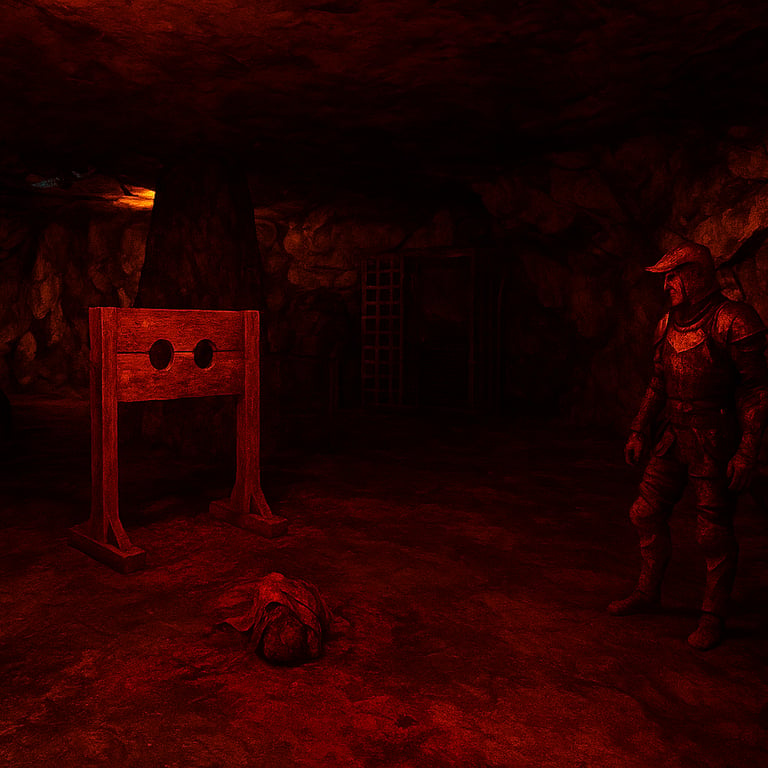
Persuasive replayability
Cults of Sacrifice
Level Design & Systems Case Study
Overview
Cults of Sacrifice is a third‑person stealth‑action prototype built in Unreal Engine 5.4. You play as a captured thief, trapped in a decaying prison whose walls conceal branching paths and secrets. Your objective is to navigate a hostile, ever‑growing labyrinth and orchestrate an escape.
Project genesis
This project was the capstone of a two‑year 3‑D Art and Design course. It began as simple shapes sketched on paper and deliberately retained a primitive design vocabulary through its environmental storytelling. Each white‑box shape was later replaced with fully textured assets, but the spatial logic remained true to the original drawings.
Design goals
Emergent narrative and “nested structures”. Inspired by my design principle of narrative fracturing and nested systems, the prison is designed as a series of self‑referential loops. Hidden circuits interconnect branching paths so that a route taken early on can alter the context of an area, encouraging multiple playthroughs.
Sensory overload as camouflage. The level uses lighting, colour and sound to overload the senses and “hide things in plain sight.” Important clues and escape routes are embedded in noisy scenes, requiring players to pay close attention.
Unresolved tension. Branching paths intentionally lead players away from completion. At every fork there is something intriguing just beyond reach, creating a feeling of unresolved tension and encouraging forward momentum. By the end of the playable area, players have accumulated a backlog of unanswered questions, mirroring my design approach of deliberately delaying resolution to build meaning.
Experimental planning methods
During development I devised a spatial‑planning technique to align player expectations with environmental cues. Branches were mapped as “circuits,” each representing a potential mini‑narrative. By oversaturating the environment with points of interest, I guide players into these circuits while still giving them a sense of agency. The technique allowed for layering multiple narratives without relying on linear exposition, consistent with the goal of starting small and building.
Lessons learned
Reusing mechanics and spaces as thematic variations—turning traps into puzzles, routes into loops—proved effective in keeping the level economical yet surprising.
Heavy sensory design can mask secrets, but balancing challenge and frustration is critical; players must feel rewarded for exploring without becoming overwhelmed.
Mapping the level in circuits helped identify where narrative beats could land and how asymmetry in path difficulty built tension and player identity.
Next steps
Future iterations could include optimization most importantly, better AI patrol systems, refined player‑stealth and throwing mechanics, and more explicit narrative breadcrumbs. A public playable build or video walkthrough would allow others to experience the branching design, and further documentation of the spatial‑planning method could form the basis for a tool or design talk.
Unifying Principles
Across my environments, character models and systems prototypes—whether complete scenes or individual assets—I apply a consistent design methodology rooted in shape composition and deliberate eye‑guiding. Each project is treated as a small case study: I document the goal, the tools used and the specific problem being solved, then reflect on the outcome and lessons learned.
Shape Composition
At the foundation of every object or scene is silhouette. I begin with thumbnail sketches to explore clear, readable shapes that support the object’s intended function. Once an identifiable silhouette emerges, I look for ways to introduce an unexpected twist—through proportion, negative space or detail. Subverting an initial expectation engages the player more deeply and makes the environment more memorable. For example, in the Cults of Sacrifice level design I used spatial rearrangements. At the beginning of the game, the player is inside of a temple underneath enemies which mirrors the end location in the gameworld, with the player moving underneath houses. The inspiration for the design was spatially similar, but environmentally contrasted.
Leading the Eye
Every scene or object is composed to guide the viewer through a deliberate path. I employ lighting, colour, contrast and object placement to “bait” the eye toward points of interest. Peripheral noise—busy textures, clutter or obscured shapes—is used strategically to mask routes or secrets, creating the tension I described in my design principles. Narrative threads are woven between landmarks so that moving from point A to point B always offers an opportunity for discovery. For example, in my space‑station fork scene, foreground props draw the viewer away from an obvious hallway split, prompting them to notice a hidden narrative element before proceeding.
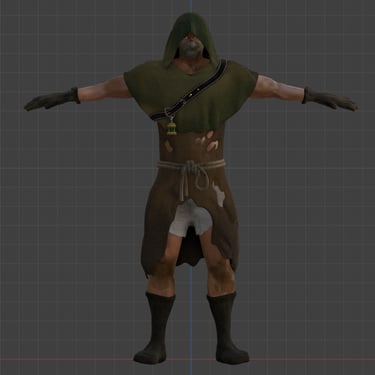
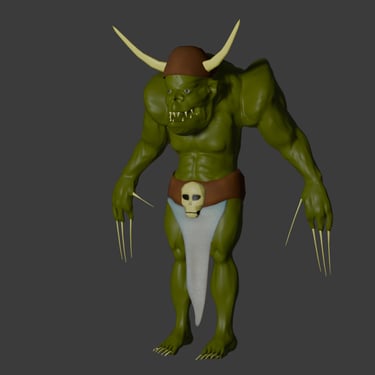
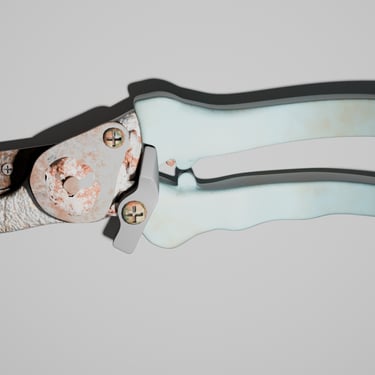
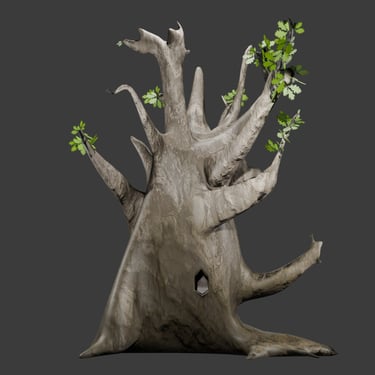

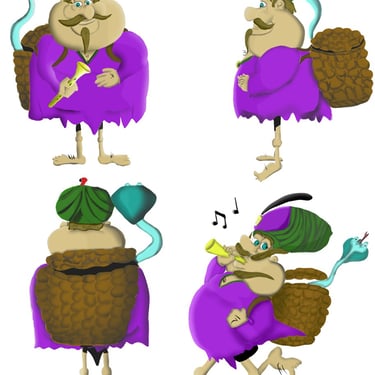
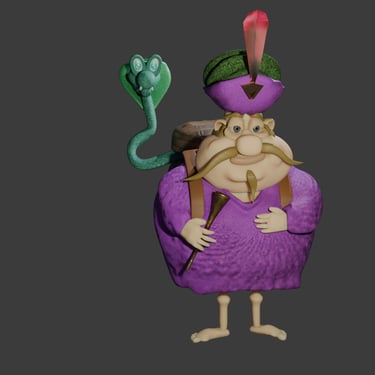
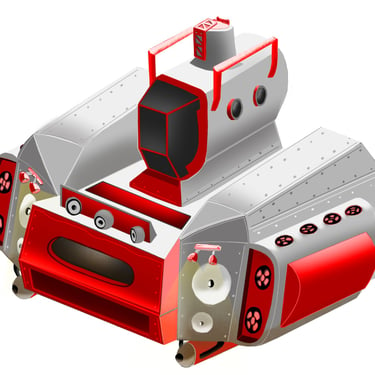
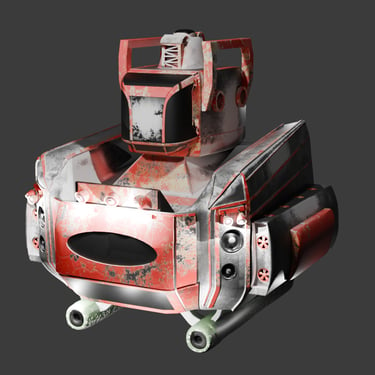
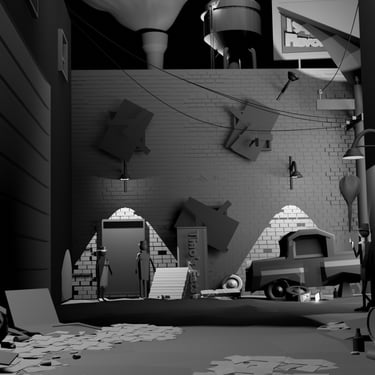
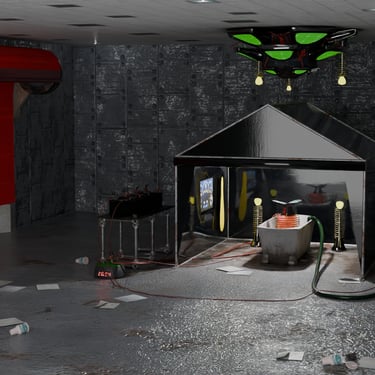
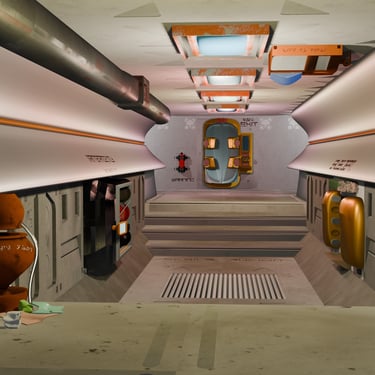
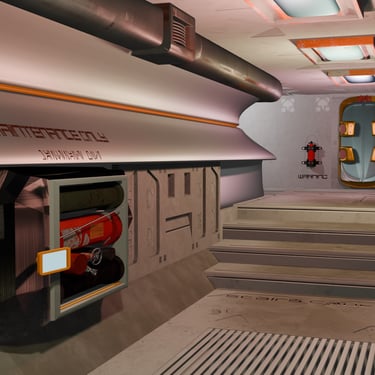
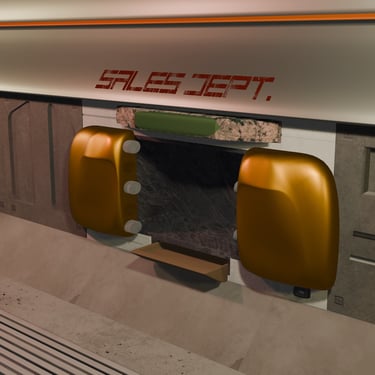
Smaller Works:
I'm Within Reach
Engagement
wavetouchstudio@gmail.com
© 2025. All rights reserved.